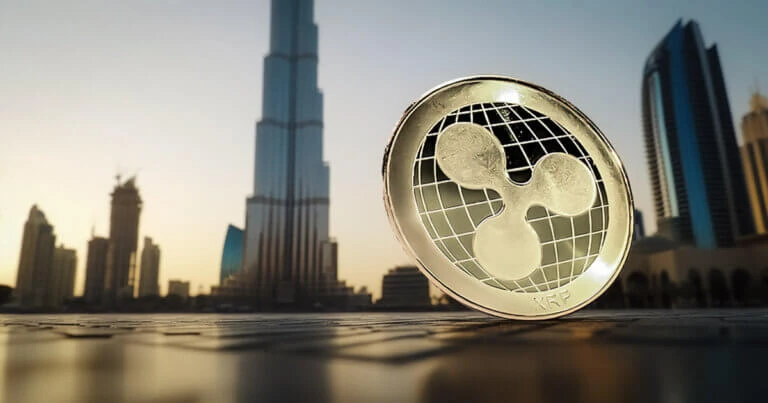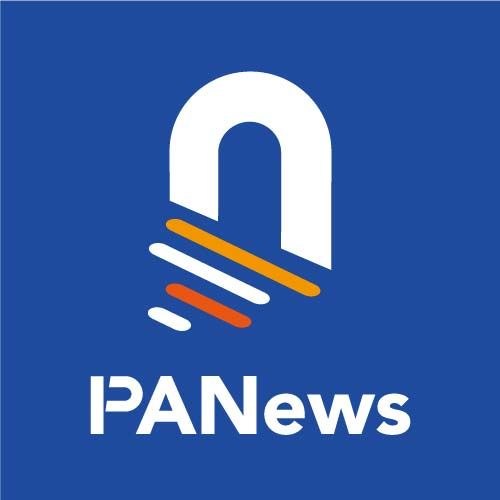Original author: Weilin, PANews

While reaching a settlement with the U.S. Securities and Exchange Commission (SEC), Ripple is rapidly restarting its global expansion in the Middle East, with Dubai becoming a key landing point for its layout of tokenized real-world assets (RWA).
Recently, the Ripple-backed blockchain XRP Ledger was selected as the underlying blockchain network for Dubai’s real estate blockchain tokenization project, showing that Ripple and XRP’s development in government-enterprise cooperation, cross-border settlement and stablecoin infrastructure is gradually turning into a breakthrough business direction for the company.
At the same time, on May 29, Nasdaq-listed energy company VivoPower International announced the completion of a $121 million private placement financing, and will transform into a crypto asset reserve strategy centered on XRP. Saudi Prince Abdulaziz bin Turki Abdulaziz Al Saud led the investment of $100 million, showing the recognition and bet of Middle Eastern capital on the XRP ecosystem.
XRP Ledger becomes the first public blockchain for Dubai government real estate tokenization project
On May 26, the Dubai Land Department (DLD) announced a partnership with asset tokenization platform Ctrl Alt to launch PRYPCO, the first government-led real estate tokenization project in the Middle East. The project is jointly supported by the Dubai Virtual Asset Regulatory Authority (VARA) and the Dubai Future Foundation. It plans to issue real estate assets on the XRP Ledger (XRPL) through Ctrl Alts PRYPCO Mint platform, with a minimum investment threshold of 2,000 dirhams (about $545).
The project is an important part of Dubai’s “Real Estate 2033 Strategy”, which aims to achieve a 60 billion dirham (about $16.3 billion) real estate tokenization market by 2033. Ctrl Alt has obtained a broker and issuer license from VARA and said it has completed asset tokenization of nearly $295 million in assets.
As the main contributor and promoter of XRPL, Ripple has been given the role of technology provider for government-supported asset on-chain, which means that the protocol has expanded from cross-border payments to RWA asset support. XRPL uses the Ripple Protocol Consensus Algorithm (RPCA) which does not require mining, and can achieve transaction settlement in seconds without the mining process that consumes a lot of energy.
XRPL is also actively promoting the stablecoin ecosystem on its own network. SG-FORGE has announced that it will launch EURCV, which is pegged to the euro, on XRPL in 2025; Braza Group will also launch BBRL, a stablecoin pegged to the Brazilian real, on XRPL, laying a solid foundation for building a multi-asset, multi-scenario tokenization foundation on XRPL.
At the same time, XRP has also gained favor from Middle Eastern capital. On May 29, Nasdaq-listed energy company VivoPower International (VVPR) announced the completion of a $121 million private placement financing and will transform into a crypto asset reserve strategy centered on XRP. Saudi Prince Abdulaziz bin Turki Abdulaziz Al Saud led the $100 million investment, and former SBI Ripple Asia executive Adam Traidman will serve as chairman of the advisory board. According to SEC documents, the company plans to issue 20 million common shares at $6.05 per share.
Middle East strategy accelerates: obtains Dubai Financial Services Authority license, acquires brokerage firm Hidden Road
Ripples emphasis on the Middle East market is no accident. As early as November 2020, Ripple established its regional headquarters in the Dubai International Financial Center (DIFC). The company said the move was in consideration of the unclear US crypto regulatory policy and the possibility of withdrawing from the United States. In December of the same year, the SEC first accused Ripple CEO Brad Garlinghouse and co-founder Chris Larsen of conducting an unregistered securities offering by selling Ripples digital token XRP since 2013. The SEC said Ripple raised $1.3 billion through these so-called securities sales, and Ripple said XRP is not a security. After several years of evolution and development, the Middle East now accounts for about 20% of Ripples global customers.
In March this year, Ripple was granted a regulatory license by the Dubai Financial Services Authority (DFSA), becoming the first compliant blockchain payment provider in DIFC and officially launching compliant encrypted cross-border payment business in the UAE. In May, Ripple announced a partnership with UAE digital bank Zand Bank and fintech company Mamo to embed Ripples cross-border payment system into its financial service system to support 24/7 cross-border settlement. Zand Bank also plans to launch a stablecoin pegged to the AED to enhance local digital payment capabilities.
Stablecoin RLUSD is also enriching Ripples business ecosystem and supporting the companys business expansion. RLUSD not only offers an annualized return (APR) of up to 8%-9% on Aave, quickly attracting about $150 million in funds, but also landed on Euler Finance on May 29, allowing users to lend and borrow RLUSD directly on the platform and use it as collateral. Currently, the annualized return on deposits (Supply APY) of RLUSD on Euler is as high as 22.05%. PANews previously reported that Ripple has recently cooperated with Chainlink to enhance the practicality of RLUSD in the DeFi field; Ripple has also reached cooperation with Revolut and Zero Hash to expand the market coverage of RLUSD; while RLUSD is listed on the exchange Kraken, it is also integrated into its payment solution Ripple Payments for cross-border payment processes for customers such as BKK Forex and iSend.
In addition to the payment business, Ripple is also stepping up its layout in the brokerage, custody and tokenization fields. On April 8 this year, the crypto payment company Ripple announced plans to acquire the major brokerage Hidden Road for $1.25 billion, aiming to expand its services to institutional investors. CEO Brad Garlinghouse said, Ripple needs to ensure that we have the right infrastructure to attract and expand to a larger group of large institutions. The transaction was mainly conducted in the form of cash, XRP and stocks. Subject to regulatory approval, the acquisition will be completed in the next few months.
Once the acquisition is complete, Ripple will “inject billions of dollars of capital to provide immediate scale and meet the needs of Hidden Road’s prime brokerage business.” Garlinghouse said the prime broker will integrate the stablecoin RLUSD as collateral for its prime brokerage products and explore the use of XRP Ledger to “improve settlement efficiency.”
According to public reports, Hidden Road plans to set up an office in Abu Dhabi. According to people familiar with the matter, the office will be led by partner James Stickland. Hidden Road has received the principle approval (IPA) from the Financial Regulatory Authority (FSRA) of the Abu Dhabi Global Market, which will allow it to provide clearing and prime brokerage services to institutional investors in the UAE.
Sources said Hidden Road may include members of the Abu Dhabi royal family on the board of its local entity after it obtains final regulatory approval.
Can “Tokenization as a Service” succeed? Ripple regains the development time lost by SEC’s “hard control”
John Deaton, a crypto lawyer who supports Ripple, said that Ripples acquisition of Hidden Road is not just a single expansion, but a forward-looking layout for the integration of DeFi and TradFi. He pointed out that Hidden Road handles more than $3 trillion in transactions each year and serves more than 300 institutional clients, and is a bridge between traditional capital and on-chain clearing.
Deaton believes that Ripples Ripple Custody custody service, payment and stablecoin systems together constitute a one-stop blockchain financial service platform. Its vision is to provide Tokenization-as-a-Service to banks and other financial institutions, and realize the integration of the entire process from asset tokenization, mortgage payment to clearing and circulation.
According to the Boston Consulting Group (BCG), the digital asset custody market will exceed $16 trillion by 2030. In his view, Ripple is trying to seize this dividend and build a technical layer for the tokenization of global financial assets through XRP Ledger.
Another reason for Ripples accelerated progress in the Middle East is its latest progress in the US regulatory environment. On May 9, Ripple reached a settlement agreement with the SEC, and Ripple will pay a $50 million fine and lift some of the bans. The SEC also no longer appealed the previous ruling, marking the official end of the regulatory tug-of-war that has continued since 2020.
Then on May 28, Ripples Chief Legal Officer Stuart Alderoty submitted a supplemental letter to the SEC, emphasizing that XRP itself does not constitute a security, and believes that most crypto assets should not be considered securities in secondary market transactions. He suggested that the SEC introduce a safe harbor mechanism to provide more operational compliance guidance for the digital asset market.
At the same time, the approval of XRP spot ETF is also in progress. On May 28, the SEC has officially reviewed the application of WisdomTree XRP Fund submitted by Cboe BZX Exchange. If it is successfully approved, Ripple may usher in another round of growth points of capital and user inflow.
In general, after years of fighting with the SEC, Ripple is rapidly redeploying its global strategy with the help of the Middle East, a regulatory-friendly frontier. As its technical hub, XRP Ledger is taking on multiple roles from payment infrastructure, stablecoin clearing to asset tokenization. If Ripple can successfully promote the implementation of the tokenization as a service model, the Middle East may become an important testing ground for it to get rid of the regulatory shadow, achieve the integration of DeFi and TradFi, and put assets on the chain.
Share to:










